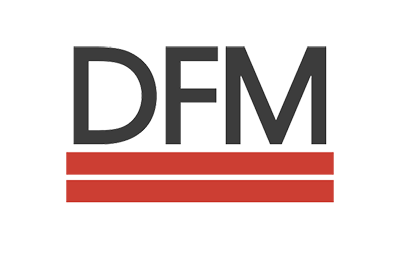This time of year, April showers are a common sight, but did you know they bring more than just flowers? Stormwater is a big part of this rainy season, especially in D.C., Northern Virginia, and Maryland. Most often, it’s from the rain, and other times it’s from melting snow and ice. Whatever the source, it’s essential to be prepared and have a plan for managing all that water.
To help you out, we’ve got a checklist of the best stormwater management practices to ensure your system is ready for anything mother nature throws your way this season. But first, let’s take a closer look at what stormwater management really means.
What’s Stormwater Management?
So, what exactly is stormwater management?
Well, stormwater management is the effort to control and reduce the quantity and quality of stormwater runoff. It also involves coming up with resourceful means to properly reuse stormwater. Effective stormwater management involves planning for runoff water by incorporating proper drainage when designing communities, cities, and developments.
Stormwater management should also include the maintenance of water drainage systems and the collection and storage of stormwater. It is impossible to get rid of impervious surfaces such as roads and buildings, which have caused a significant increase in the amount of runoff stormwater. But having a stormwater management plan can be helpful.
Here is a checklist for stormwater management this spring:
1. Maintain All Stormwater Management Infrastructure
Stormwater management systems are neglected during winter due to snow cover, harsh weather, and freezing temperatures. However, in spring, there’s no excuse for neglecting these systems. Conduct regular checks and maintenance of stormwater management facilities that are already in place. These include storm drains, stormwater ponds, catch basins, and infiltration basins.
Check for any damages and blockages. Arrange for regular cleaning to remove any debris or sediment clogging the systems. Maintenance should also involve the repair of any damaged parts.
2. Inspect and Repair Erosion Controls
When excessive runoff water flows on bare land, it collects and carries soil particles and debris that find their way into the stormwater management pathways. These particles and debris may cause blockage of the drainage systems leading to flooding.
This runoff water can also wash off chemicals and other harmful pollutants into the drainage system. So, conduct regular inspections and repair erosion controls such as silt fences and wattles and check dams near stormwater management facilities. This will prevent siltation and other soil residues from washing into the stormwater ways.
3. Conduct Regular Inspections
Your stormwater management plan should include regular inspections of all the drainage systems and stormwater pathways. A regular maintenance and inspection program will ensure that you spot any blockages and debris clogging the systems before additional damage or flooding can happen. Regular inspections will also ensure that you are prepared for emergency weather events and heavy rains.
4. Monitor Weather Forecasts
During springtime, the weather can change drastically from sunny to stormy with heavy rainfall. Therefore, be watchful of daily weather forecasts. Create alerts on your smartphone to be notified of any potential extreme weather. That way, you can put in place any preventive measures to stop excessive runoff.
5. Conduct Public Education
Help inform others of the importance of stormwater management by educating them on how their actions can contribute to stormwater runoff. Encourage them to exercise proper waste disposal and avoid dumping waste into stormwater drainages and ditches.
6. Implement Green Infrastructure Best Practices
Green infrastructure is a system of techniques and technologies that manage stormwater by copying the way nature handles water, helping to decrease the negative effects of development on water quality and quantity. These include green roofs, rain gardens, permeable pavements, constructed wetlands, and conserving green spaces.
In green infrastructure, soil, plants, animals, and soil microorganisms facilitate the infiltration and drainage of stormwater. These elements work together to reduce the quantity of stormwater runoff and remove pollutants.
7. Implement a Stormwater Management Plan
Come up with a comprehensive stormwater management plan that involves a well-outlined schedule for inspection and maintenance of the stormwater infrastructure. Regularly review this stormwater management plan to ensure that it’s up to date — especially during spring time.
8. Dispose of Hazardous Materials Properly
Proper disposal of hazardous materials such as pesticides, antifreeze, oil, and gasoline can help to prevent water pollution. The runoff stormwater drains into rivers, streams, and other man-made stormwater management facilities.
9. Implement Best Management Practices (BMPs)
Implement Best Management Practices (BMPs) that reduce soil erosion and pollution. Such include planting grass on bare soil to increase vegetation cover which will control erosion. You can also have green roofs and rain gardens.
10. Engage with the Local Community and Community-Based Organizations
A collective effort from fellow residents, community organizations, and local governments can help in stormwater management. This will encourage responsible behavior and participation in stormwater programs.
DFM Development Services — Stormwater Compliance Experts and More
Contact us for stormwater facility construction inspections, stormwater as-built certifications, and stormwater permit close-outs/notice of termination.




